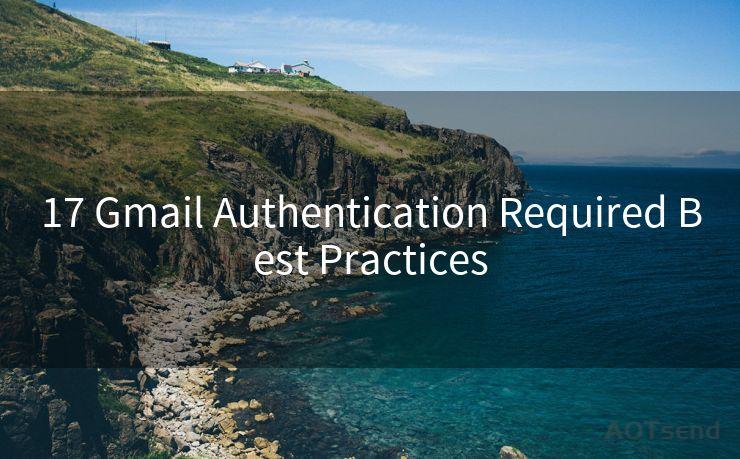17 Gmail Authentication Required Best Practices




When it comes to email communication, Gmail stands as one of the most popular and trusted platforms. However, with the increasing number of cyber threats, it's crucial to follow best practices to ensure the security of your account and data. In this article, we'll discuss 17 Gmail authentication required best practices that will help you keep your email communications secure.
1. Enable Two-Factor Authentication
Two-factor authentication adds an extra layer of security to your Gmail account. When enabled, you'll need to provide an additional code, sent to your phone, along with your password to log in.
2. Use a Strong and Unique Password
Creating a strong and unique password for your Gmail account is essential. Avoid using common words, phrases, or personal information that can be easily guessed.
3. Regularly Update Your Password
It's a good practice to update your Gmail password periodically. This reduces the risk of your account being compromised due to a stolen or guessed password.
4. Beware of Phishing Scams
Phishing scams are a common way hackers try to steal your Gmail credentials. Always be cautious of emails asking for your personal information or login details.
5. Utilize Gmail's Secure Connection
Ensure that you're always using a secure connection (HTTPS) when accessing your Gmail account. This encrypts your data, providing an extra level of security.
6. Monitor Your Account Activity
Regularly check your Gmail account activity to spot any unusual or unauthorized access attempts. Gmail provides tools to monitor and review your account's security.
7. Don't Forward Emails to External Accounts

Avoid forwarding your Gmail emails to external accounts, as this can expose your data to additional risks.
8. Use Gmail's Advanced Security Features
Gmail offers advanced security features like malware and phishing protections. Make sure these are enabled to protect yourself from malicious emails.
9. Be Cautious of Third-Party Apps
When granting access to third-party apps, ensure they are trustworthy and have a good reputation. Revoke access for any apps you no longer use.
10. Keep Your Contact List Private
Avoid sharing your contact list publicly, as this information can be used by spammers or scammers.
11. Use Gmail's Confidential Mode
Gmail's Confidential Mode allows you to send sensitive information with an expiration date and password protection. Utilize this feature for important emails.
12. Report Suspicious Activity
If you notice any suspicious activity on your account, report it immediately to Google.
13. Backup Your Important Emails
Regularly backup your important emails to prevent data loss in case of any security incident.
14. Avoid Using Public Computers
Accessing your Gmail account on public computers can pose a security risk. If necessary, use private browsing mode and log out after use.
15. Educate Yourself on Gmail Security
Stay updated on Gmail's security features and best practices by regularly visiting Google's support pages.
16. Consider Using a VPN
When accessing Gmail from public networks, using a Virtual Private Network (VPN) can add an extra layer of security.
17. Maintain Good Cyber Hygiene
Lastly, maintaining good cyber hygiene is crucial. This includes being cautious of what you click, not opening unknown attachments, and regularly updating your software and devices.
By following these 17 Gmail authentication required best practices, you can significantly enhance the security of your email communications. Remember, prevention is always better than cure, so stay vigilant and protect your Gmail account from any potential threats.
🔔🔔🔔
【AOTsend Email API】:AOTsend is a Managed Email Service for sending transactional emails. Support Email Types: reminders, authentication, confirmations, notifications, verification codes, invoices, password resets, account activations, billing statements, two-factor authentication (2FA), and one-time passwords (OTP) emails, etc. $0.28 per 1000 Emails. 99% Delivery, 98% Inbox Rate.
You might be interested in:
Why did we start the AOTsend project, Brand Story?
What is a Managed Email API, How it Works?
Best 25+ Email Marketing Platforms (Authority,Keywords&Traffic Comparison)
Best 24+ Email Marketing Service (Price, Pros&Cons Comparison)
Email APIs vs SMTP: How they Works, Any Difference?




Scan the QR code to access on your mobile device.
Copyright notice: This article is published by AotSend. Reproduction requires attribution.
Article Link:https://www.mailwot.com/p6847.html



